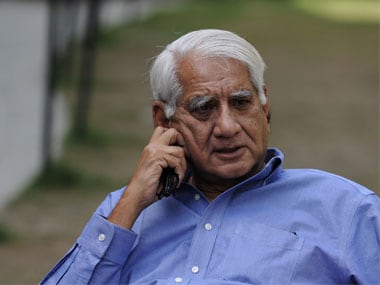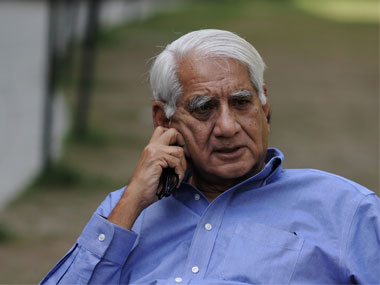There’s something terribly ironic about sitting in a multi-storeyed building while remembering architect Charles Correa, as most of us city dwellers are doing today. The architect and urban planner hated these glassy towers that together created inept replicas of a Manhattan skyline. Instead, Correa designed buildings with terraces and courtyards; buildings that responded to the India that surrounded them rather than sought to cocoon a resident in an unsustainable fiction. “I’ve never designed a glass building,” he’d said once. “I’ve never felt the need to. I’ve used glass, but I wouldn’t say I’ve ever designed a glass tower. I wouldn’t be so stupid as to do that.” [caption id=“attachment_2299682” align=“alignleft” width=“380”]  Charles Correa. AFP[/caption] Charles Correa was the knight in shining armour that Mumbai deserved, but didn’t get because he was thwarted by administrations and lobbyists who tripped him up. They didn’t build the neighbourhoods of which he’d dreamed. The city wasn’t allowed to open up the way he’d hoped it would with Navi Mumbai. Instead, neighbourhood after neighbourhood gave way to glass and concrete high-rises. “Just think of what we’ve created in Bombay,” Correa observed last year at a panel discussion. “We don’t even know there are drug lords in the city because their profile is so low. But everyone knows about builders.” It’s one life’s ironies that as a young architect, Correa was inspired by something Le Corbusier told him. Correa asked Le Corbusier, “How do you design?” The pioneer of modern architecture and the brain behind Chandigarh replied, “The thing is to see the building against the sky.” The two men treated this concept very differently. Le Corbusier’s grid-like design for Chandigarh may look neat, organised and efficient, but even after decades, the design isn’t organic to the city. There’s a curious sense of disconnect that characterises Chandigarh. It’s one of those places where you can easily imagine an Indian The Truman Show. Every detail feels artificial – because it is. Le Corbusier’s design attempted to impose order, as he envisioned it, upon Chandhigarh. As Hasan Suroor observed , “With its isolated, self-contained neighbourhoods divided into distantly located sectors, Chandigarh was a subversion of the traditional Indian city which encouraged greater social interaction among its citizens.” In contrast, Correa’s designs are always a dialogue with the physical world that surrounds them. They use materials available in a particular area and the structure responds to the climate and local resources. Take the tube house that he conceived for low-income families in Ahmedabad, for example. Its shape drew in cool air and encouraged air circulation. “A mechanical engineer denies me my imagination,” Correa had once said in an interview. Instead of turning to devices like air conditioning that keep the natural elements out, Correa’s open-to-sky concept of design looks to reconnect with them. Kala Academy in Goa uses the cluster of casuarina trees and the blue line of the sea in the distance as a literally natural extension to Correan’s design. Shade, breeze, absorbing heat, retaining cool, following the sunlight’s path – these are the nitty gritty of Correa’s designs. Two years ago, Correa donated all his drawings, models and records to the Royal Institute of British Architects. It was a decision he made with a heavy heart. Correa had wanted his papers to stay in India, but he couldn’t find any archive whose standards lived up to his own. There are about 6,000 items that Correa ultimately handed over to RIBA, which held an exhibition of Correa’s work and described him as the greatest living architect. The only disappointment, as far as the exhibition was concerned, was to see how many of Correa’s designs – simple and spectacular as they are – are described as “unbuilt”. Looking at his models, reading his words, remembering his bitterness at how Navi Mumbai turned out, you can’t help but wonder what beautiful and distinctively modern cities we could have built in India and what drab, boring and ugly ones we’ve got instead. In his book A Place in the Shade, Correa wrote of Mumbai, “While it is getting better and better as city, and disintegrating (very rapidly and quite unnecessarily) as environment… perhaps what we are experiencing is the last burst of energy. .. the spastic twitches before the end. Living in this city we wouldn’t notice it ourselves. If you drop a frog into a saucepan of very hot water, it will desperately try to hop out. But if you place a frog in tepid water and then gradually, very very gradually, raise the temperature, the frog will swim around happily… adjusting to the increasingly dangerous conditions. In fact, just before the end. . . just before the frog cooks to death… when the water is exceedingly hot. . . the frog relaxes. . . and a state of euphoria sets in (as in hot-tub baths). Maybe that’s what happening to us in Bombay, as everyday we find it getting to be more and more of a great city… and a terrible place.” Correa, though, didn’t adjust. He resisted the apathy and the languor that threatened all of us. He didn’t mellow in his old age, as was evident from the spectacular clarity and precision with which he dismantled flawed arguments. “I don’t expect anyone to follow me,” Correa had once said in an interview, when he was asked how he felt about being something of a solitary figure in Indian architecture. “But am I frustrated? Yes, reasonably so.”
Remembering Charles Correa, one of India’s greatest contemporary architects, who passed away on Tuesday following a brief illness.
Advertisement
End of Article


)
)
)
)
)
)
)
)
)



